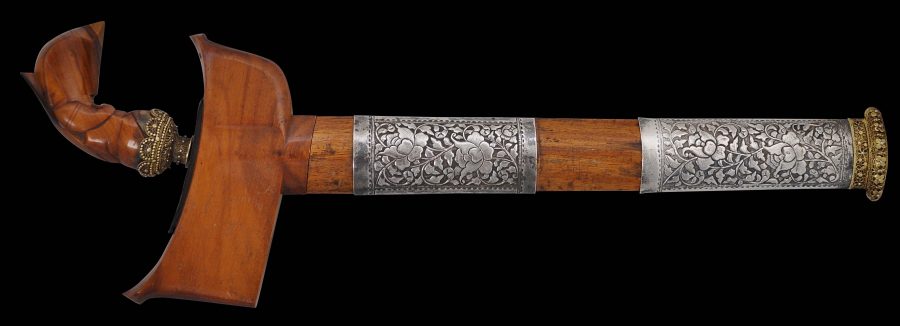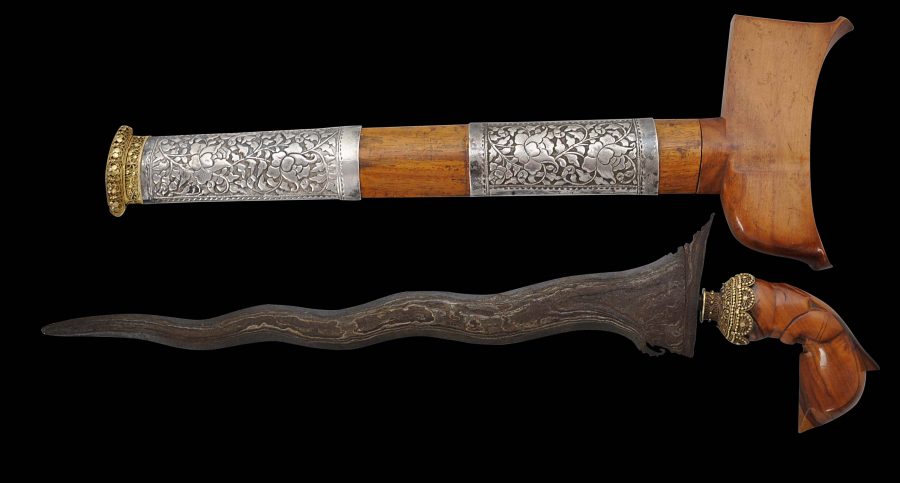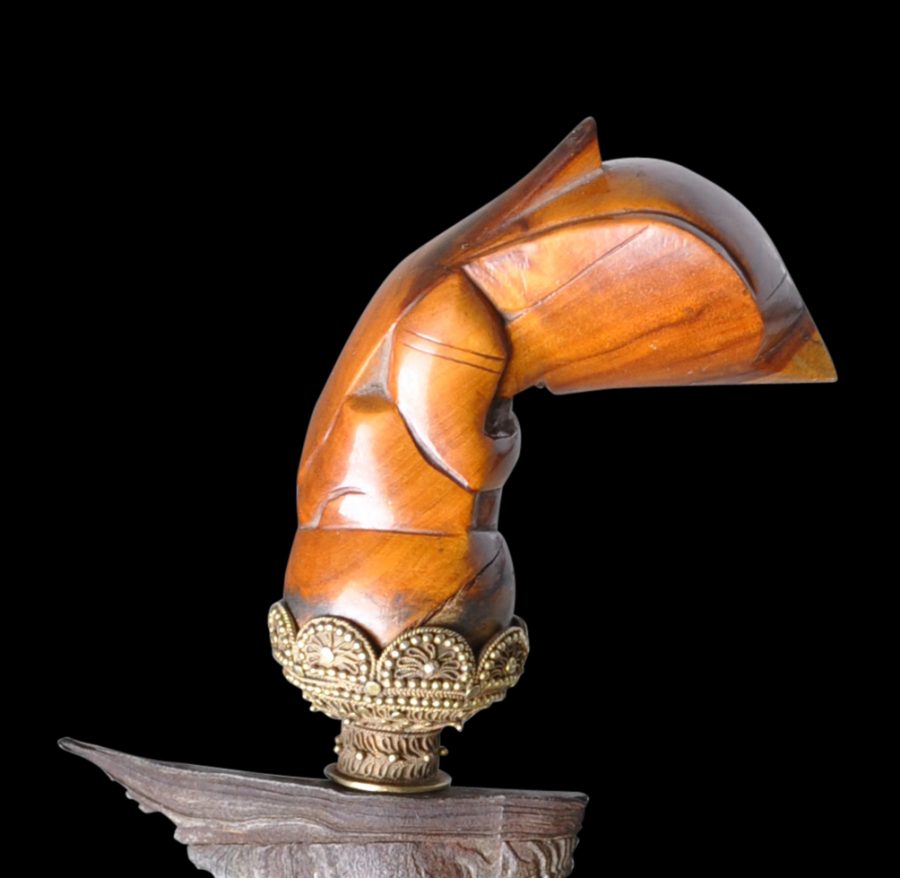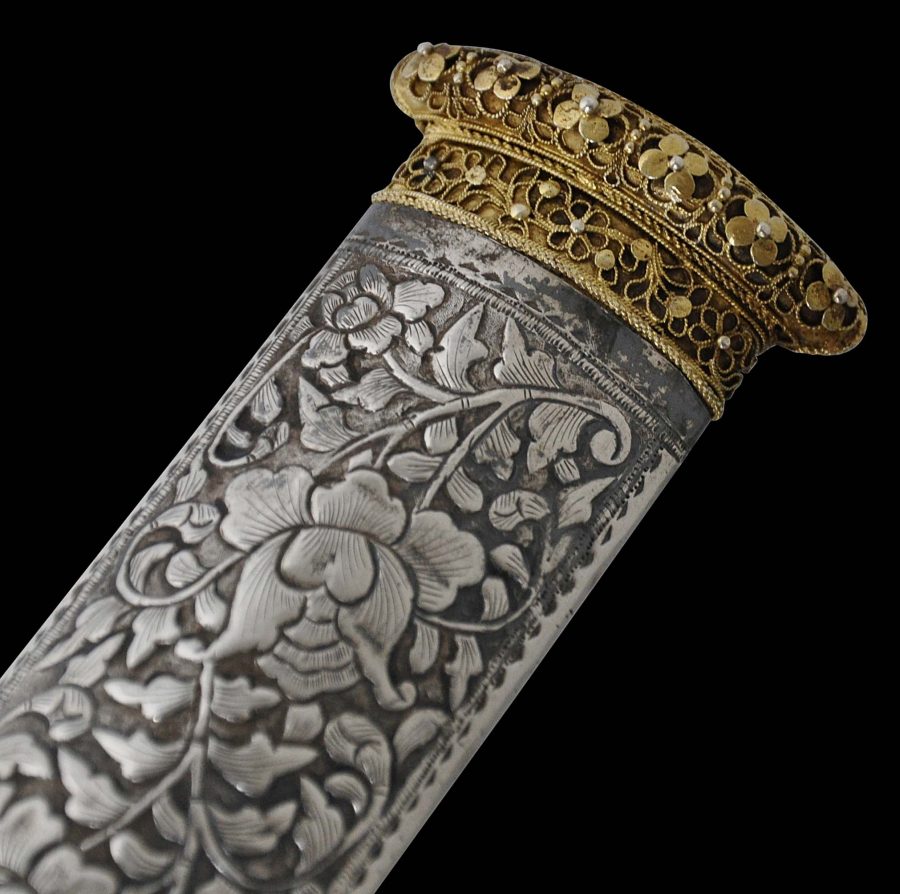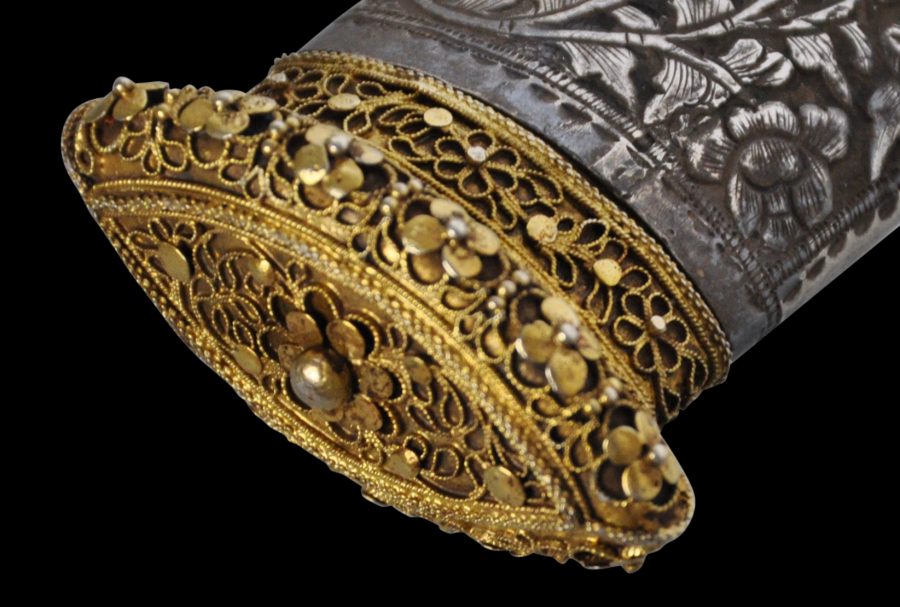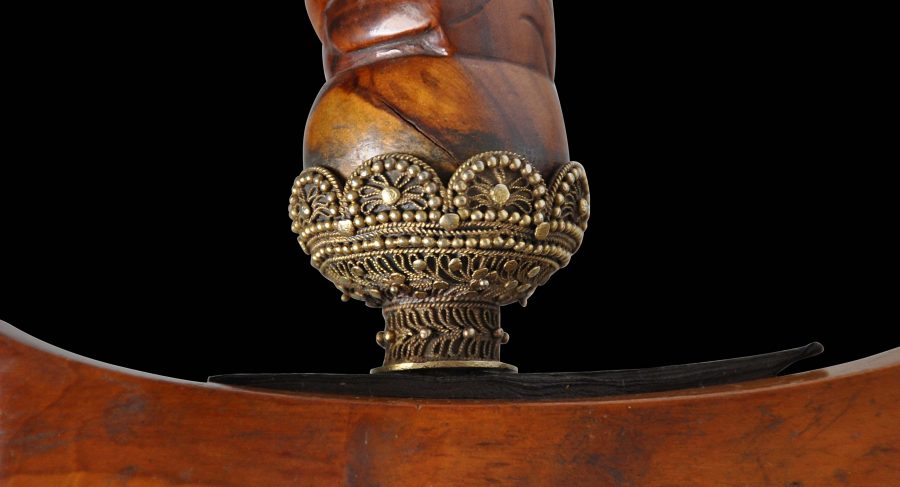Most krises come from Indonesia on account of its large population. Krises from the Malay Peninsula are less commonly encountered. The example here is one such kris, and it possibly comes from Terengganu in Malaysia’s north.
It has a double-edged, wavy blade of damascened iron. The wooden scabbard is encased in silver sheets that have been beautifully chased on both sides with peony-like flowers.
The hand-guard is of plain wood and is shaped like the keel of a European sailing vessel leading some to speculate that this might have been the impetus for this shape.
The hilt is of wood and has been finely carved in the form of a zoomorphic jawa demam figure. The hilt ring (mendak) is of gold and gold filigree, and so too is the cap (buntut) at the end of the scabbard. Both are decorated with applied gold wire and granulation work in a motif known as telur ikan (‘fish egg’).
The gold mounts are of solid gold and way an estimated 35 grams in total.
The kris is in very fine condition and has an overall wonderful, soft patina associated with age. It was acquired in the UK and most probably has been in the UK since colonial times.
References
Caravana, J. et al, Rites of Power: Oriental Weapons: Collection of Jorge Caravana, Caleidoscopio, 2010.
Gardner, G.B., Keris and other Malay Weapons, Orchid Press, 2009 (reprint of 1936 original).
Hales, R., Islamic and Oriental Arms and Armour: A Lifetime’s Passion, Robert Hale CI Ltd, 2013. :UK art market


